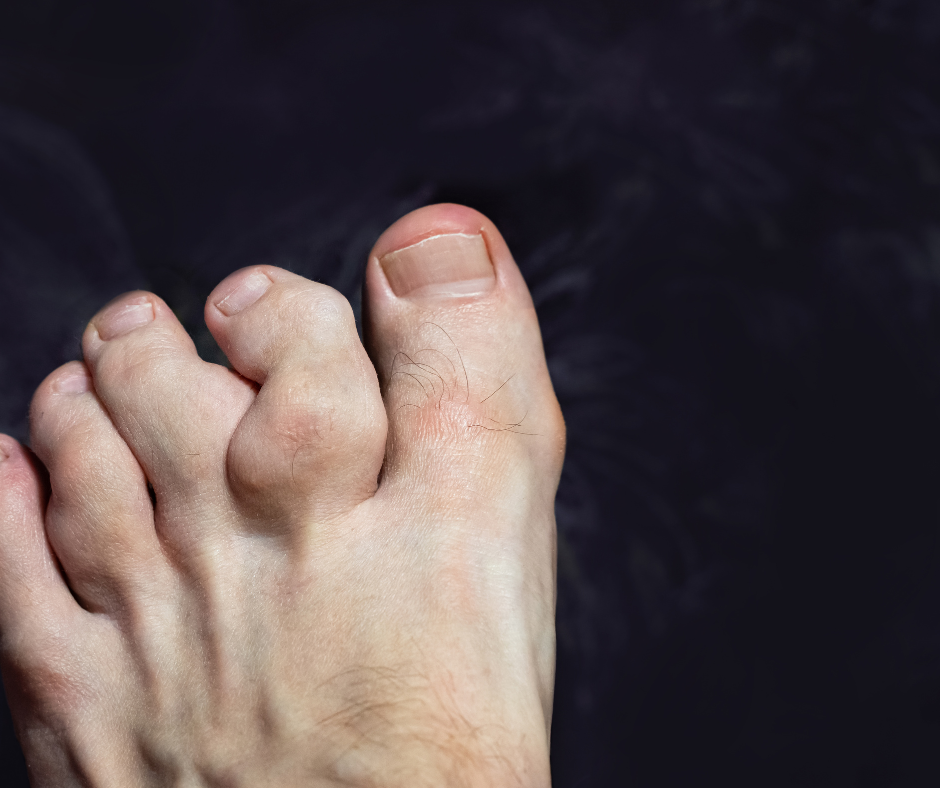Introduction
Claw toes are a specific type of lesser toe deformity that affects the positioning and flexibility of your toes.
Unlike other toe deformities, such as hammer toes or mallet toes, claw toes involve abnormal positioning at multiple joints within the toe, creating a characteristic “clawed” appearance. The big toe is known as the hallux, whilst all the others are referred to as the lesser toes.
While some people are born with claw toe abnormalities, the majority develop during adult life, often as a result of underlying neurological conditions, muscle imbalances, or mechanical problems within the foot.
Causes of Claw Toes
Claw toes develop due to an imbalance between the muscles that flex and extend the toes, causing them to bend abnormally into the characteristic clawed position. Several factors contribute to this condition:
Primary Causes:
- Neurological conditions affecting muscle control and balance
- Peripheral neuropathy and nerve damage
- Muscle weakness or imbalance in the intrinsic foot muscles
- Spinal cord injuries or neurological disorders
- Tight calf musculature and structural abnormalities
Risk Factors:
- High foot arches
- Secondary issue from other foot problems
- Age-related changes
- Inappropriate footwear
- Previous foot injuries or trauma
Claw Toes Symptoms
In the early stages of claw toe development, patients typically experience pain under the ball of the foot, which is often the first and most unpleasant symptom, present with every step.
There is localised swelling around the affected area, and patients often find that barefoot walking is more uncomfortable than wearing cushioned shoes.
As the condition progresses, the characteristic clawed appearance becomes more pronounced. The toes curl downward at multiple joints, creating pressure points that rub against shoes and the ground.
Eventually, patients develop significant discomfort when the deformed toes begin rubbing against shoes, causing considerable pain.
Eventually, patients develop renewed pain in the ball of the foot, and the toe begins rubbing against shoes, causing significant discomfort. Finding comfortable footwear becomes increasingly difficult, and corn and callus formation often develop from the constant friction.


Claw Toes Treatment
Effective claw toe treatment requires accurate diagnosis and understanding of any underlying neurological causes. The cause of clawing of the toes should never go uninvestigated, as the underlying neurological condition needs to be identified so that treatment and expectations can be managed in an optimal way.
Non-Surgical Treatment
Non-surgical treatment focuses on symptom relief and preventing progression through careful footwear modifications. Professional advice on appropriate shoe selection is essential, with patients advised to choose shoes with adequate depth and width to accommodate the deformed toes whilst avoiding high heels and narrow toe boxes.
Protective measures play a crucial role in non-surgical treatment, including the use of silicone sleeves to reduce pressure and rubbing, protective toe caps and cushioning, and custom orthotic devices to help redistribute pressure and provide support.
Regular podiatric treatment of corns and calluses helps manage pressure-related skin problems and prevents complications through ongoing maintenance. Stretching and strengthening exercises may also help maintain flexibility where possible.
Claw Toe Surgery
When non-surgical treatment fails to provide adequate relief, surgical intervention may be recommended.
The type of surgery performed will depend on the problem with your toes and may involve releasing or lengthening tendons, putting joints back into place, straightening a toe and changing the shape of a bone.
Your surgeon may fix the toes in place with wires or tiny screws.
Why Choose LFAC?
The LFAC team understands that each claw toe case is unique, requiring individualised assessment and treatment planning. We ensure that all underlying causes are properly investigated and addressed as part of your comprehensive treatment plan.
Early diagnosis and the right treatment plan can make all the difference in your recovery and long-term mobility. Using state-of-the-art diagnostic tools, we create personalised treatment plans designed to get you back to pain-free movement as quickly as possible.
Our flagship clinic is based at St John & St Elizabeth Hospital in St John’s Wood, but we also offer world-class orthopaedic care at leading locations across London, including:
- London Bridge Hospital
- The Cromwell Hospital
- HCA Chiswick Outpatient & Diagnostic Centre
- New Victoria Hospital
- HCA UK Canary Wharf Clinic
- OneWelbeck
- The Lister Hospital
Wherever you choose to visit us, you can expect expert treatment, cutting-edge facilities, and a commitment to your recovery. Book your consultation today and take the first step towards lasting relief.




